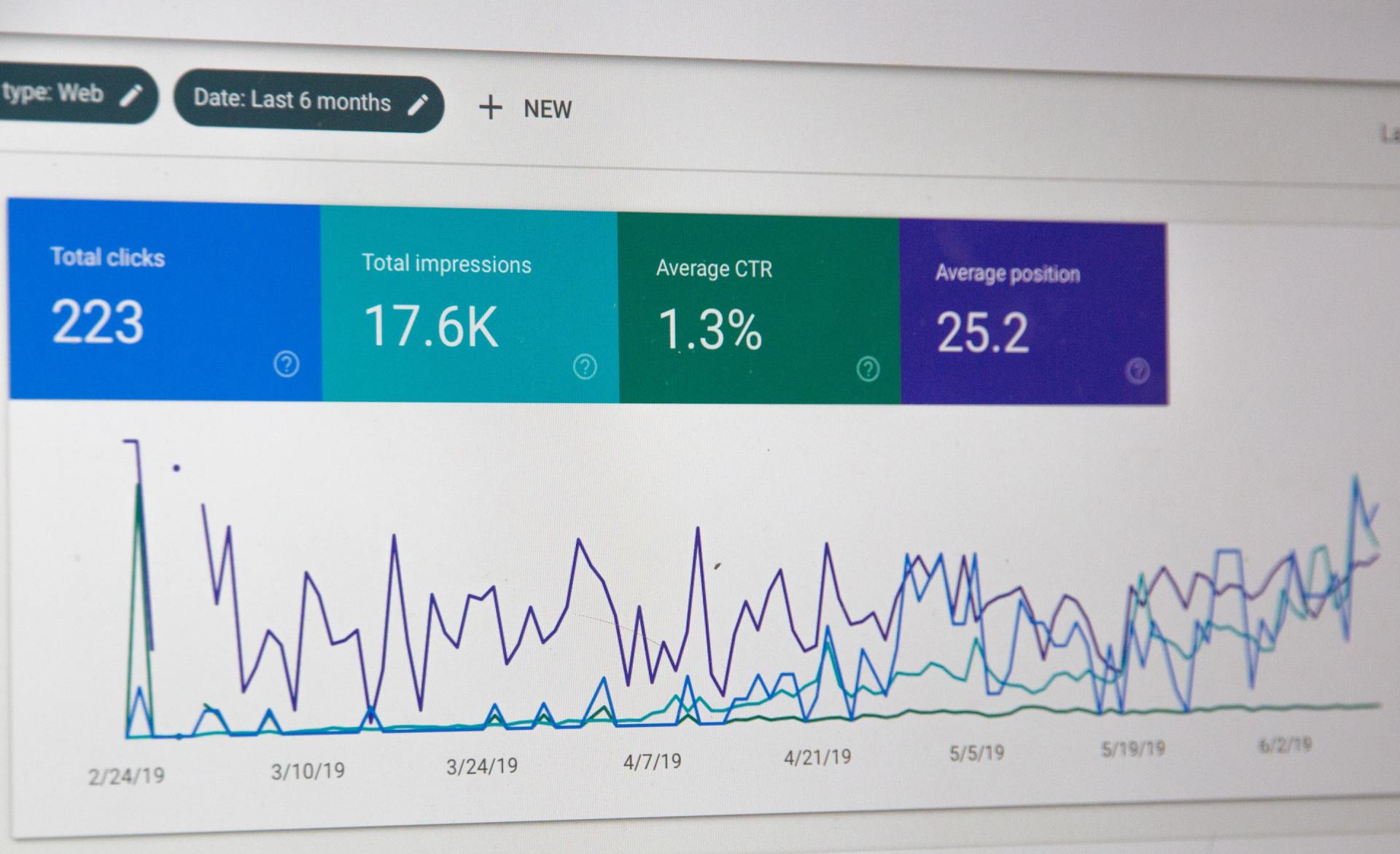Five Tactics To Help Grow Your Small Business In 2024
Five Steps to Actionable and Effective Goals for your Small and Mid-Size Business

Every year business owners must re-prioritize their strategies based upon what they’ve learned and what they aspire to accomplish. Each new year presents opportunities to strategize your business. When clarifying strategies, it is essential that the actual results are assessed. Assessing results might look like reviewing ROI, the numbers of new clients captured and engaged, gross revenues, revenue trends, and employee retention. In addition to reviewing the positive results, it is equally vital to assess what is not working. These are five tactics to help grow your small business.
Here are a few questions to help assess results:
Positive Outcomes
- What products or services stand out as the most popular and revenue producing?
- What positive feedback do I hear customers repeating?
- Are employees sharing positive feedback about services or products?
- Can links between methods and processes be made with increased profits?
Less Optimal Outcomes
- What initiatives were implemented, yet amounted to less than desirable outcomes?
- What products or services are not selling through?
- What services seem to waste time without optimal revenue outcomes?
- Are certain methods or processes wasting time?
After reviewing your actual results, when setting business strategies this year, what outcomes do you want for your business? Whether it’s more foot-traffic, website visits or increased profits, you need to make a plan and set the plan into action in order to make it happen.
Here are some helpful tips on how to set realistic goals for 2024.
Small and mid-size business data reflects that principals and owners who set goals are much more likely to succeed than business owners who don’t take the time for
goal setting
and prioritizing strategies. Initially, strategizing for your small and mid-size business may seem daunting. It doesn’t need to be. After all, strategizing and goal setting is simply assessing, reviewing and thinking about what you want out of your business, to then set plans towards achieving those outcomes. But, a key component to success is making sure your goals are realistic, actionable, and achievable, which can be tricky.

Step #1: Clarify your small and mid-size business goals using SWOT Analysis
Crafting a solid plan for your goal setting strategy is a priority before taking any action as it ensures productive results.
Identifying the right goals for the year is vital as every small business owner wants to make the most of their time and investments.
There are several steps to setting the goals to effectively align the strategy to the results that you have uncovered for your business.
The first step involves applying the SWOT Analysis method. SWOT is an acronym for strengths, weaknesses, opportunities, and threats.
SWOT Analysis is a method for identifying and analyzing internal strengths and weaknesses of your small business, and external opportunities and threats that also exist.
Small business owners can use SWOT to engage in constructive introspection and form improvement goals. A SWOT analysis guides your strategy development by helping you to identify your business’ strengths and weaknesses (S-W), along with broader opportunities and threats (O-T). Following the SWOT analysis, aligns your business strategies for the upcoming year to your targeted goals. Developing this broader awareness of actual conditions both within your business and the external market, helps with both strategic planning and decision-making. These situational conditions shape your small businesses’ current and future outlook, including processes and actions, while also helps to develop strategic goals.
SWOT can easily be applied to small businesses and resources are available to assist in the process.
Multiple websites offer free resources, including templates to plug in your personalized information about your small or mid-size business to make your strategizing process much easier this year. For example, plugging the results from your initial assessment of the positive outcomes and less optimal outcomes from last year, or years past into a SWOT template, allows you to create a SWOT chart listing out all of the identified strengths, weaknesses, opportunities and threats currently experienced in your business. By identifying these conditions, you can focus on increasing action in the positive categories to boost results. Additionally, looking over weaknesses and threats allows you to enlist processes and actions in these areas to minimize potential pitfalls over the next year. If processes are needed to streamline client relationship management, or marketing efforts, clearly recognizing these areas supports the goal setting strategy.
SWOT also focuses on analyzing multiple areas of your small business simultaneously, while also prioritizes aspects of your business needs which need may new goals, while also making the process more manageable.
How to Conduct a SWOT Analysis for your small and mid-size business
- To begin, select your top 3-5 strategies that you intend to focus on for the year. These priorities should have been uncovered in your initial assessment of actual positive results and the less optimal results identified in your initial assessment of the past year. Overall, these goals should align to your strengths and opportunities (S-O) as much as possible. Strengths-based goals focus on positive outcomes, and also caters to your business or your personal talents, while still challenging you to use those strengths and talents in new ways. From this perspective, selecting goals with a few of your personal strengths in mind, or infusing goals that you already have, with the strengths that will help you achieve them.
- Recognizing (W-T) weaknesses and threats is also important to discover one to two goal areas to address, however, the majority of the focus should be in cultivating what is working in the business and empowering these processes to grow.
Minimizing the number of top goals to 3-5 allows you to develop processes behind each area. Setting too many goals spreads your focus and resources too thin, ultimately hindering progress and the quality of the outcomes.
Maintaining a laser-like focus on each specific goal, along with the processes developed within each goal area, and maintaining this focus throughout the year, (despite circumstances that may attempt to undermine your success), ensures you accomplish each goal. It is important to review and reflect upon the strategies that you established that you intend to implement. It is vital that you establish your strategies that you intend to accomplish, and equally vital to take time to account for the results along the way.
Here are a few questions to assist in this process:
- Are the goals producing outcomes that you identified in the beginning?
- Are any adjustments needed?
- If you stay on the current track, will your goals be realized?
- A key component of successful goal setting is taking the time to review the outcomes.
- It is equally important to set aside time to reflect back on previous goals not accomplished. Understanding what went wrong can assist in the productivity and success of current goals.
Here are a few questions to assist in this process:
- What prevented these goals from becoming realized?
- Did external threats limit progress?
- Was something off in the pre-planning stages?
Step #2: Create a Tangible Plan For Setting Small and Mid-Size Business Growth Strategies
Now that you have identified the top business goals for your small and mid-size business, it’s time to break them down into manageable steps. Why? Learning how to set better strategies and small business goals from those strategies implemented in previous years takes time and attention. Learning about why results did or did not occur, is essential in gaining broader understanding in order to take the right actionable steps for the future.
To manage and attain the strategies that you establish, they must be reachable. It is vital that the goals you set are SMART goals. SMART goals are specific, measurable, achievable, relevant and time-bound. Setting strategies that are aligned to SMART goals can help you navigate the unforeseen circumstances that tend to come up throughout the year. When creating and setting the strategy for your small business plan, write them out and assess. A goal map, or outline of the strategies that you set, is helpful and ensures the goals are specifically aligned to the positive results that you identified in your initial review, while also working toward eliminating or optimizing the less than favorable outcomes identified.
If the small business strategies are outlined in a goal map, you are more likely to ensure the goals are not too general, while also keeping the targets that you establish more clear and easily identified in order to include them in your actionable plan for the year. Once the small business strategies are outlined in a goal map, it’s critical that you keep the list or outline front and center all year (and possibly the following years if your goals continue to align). Keeping your goals top-of-mind allow you to stay focused on what the priorities are, while also aligning time investments accordingly. If your goals are too vague or possibly forgotten, they will not become realized.
Another important step toward accomplishing effective small business strategies is sourcing small business tools for setting and accomplishing effective small business growth goals.
Step 3: Focus on What You Can Control / Eliminate Excess
External conditions, such as competition, market conditions, or supply chain constraints present small and mid-size business challenges that cannot be controlled. Mitigating these threats can be accomplished by focusing on what can be controlled, including enlisting additional marketing efforts, client relationship management strategies, and prioritizing products for higher sell through and optimizing the services that you can deliver despite the existing challenges.
Another important step includes clarifying the focus areas, such as new services that may be offered, areas of inventory that can be increased due to inventory constraints, or add marketing efforts to increase sales in a category that looks promising. Do you have a product or service that has sparked new interest with customers? Make this area a focus of attention in content creation, social media and integrating into promotions to existing clients. Upselling current clients can also be a great method of minimizing existing constraints.
Step #4: Be Flexible with Your Goals
From time to time, environmental conditions can hinder the strategies that you have implemented or intended for the year. Unforeseen circumstances, such as unexpected extreme weather, a new competitor in your market, employee turnover, and changes in supply chains, can impact your ability to accomplish the goal. It’s important to review goals and possibly adjust them to meet the new conditions. Additionally, if after consideration and review, it becomes clear that a goal that has been set is unachievable due to weaknesses or threats (W-T), including outside circumstances, it’s important to pivot by re-establishing a new goal in its place. For example, if after reviewing your initial strategies and evaluating goals outlined in the goal map, reassessing your strategies based upon the new conditions, is important to uncover a new more optimal goal moving forward.
Your small and mid-size business goals are essential for success, but they’re only successful if the action plans that back them up are productive. Successful strategies must include a plan and then work that takes action toward accomplishing the plan.
Step #5: Establish Small and Mid-Size Business Leadership Characteristics
In addition to setting goals around your business processes, it’s important to establish personal goals as well. Developing leadership capabilities both personally and for the business is essential. A great area to focus is leadership development includes Kouzes and Posner’s research-based, Five Practices of Exemplary Leadership, which focus on transformation.
With over 20 years’ leadership research, Kouzes and Posner conducted an inventory model, which outlines behaviors and practices rather than personality traits. Applying the model by working toward developing leadership skills and capabilities that are observable and actionable is a great way to invest in yourself.
According to the Five Practices of Exemplary Leadership model, the best leadership practices guide small and mid-size business owners to achieving their best, and to accomplishing extraordinary outcomes. In this sense, mandatory factors of leadership are transformational, where the practices and behaviors of a leader set new outcomes. Here are the steps of the model outlined, which if focused upon will help you develop stronger leadership skills for your business.
The Five Practices of Exemplary Leadership® Model
1) Model the Way
Leaders establish principles concerning the way people (constituents, peers, colleagues, and customers alike) should be treated and the way they should pursue goals. Leaders create standards of excellence and set an example for others to follow. They put up signposts when people feel unsure of where to go or how to get there. Leaders create opportunities for victory.
2) Inspire a Shared Vision
Leaders passionately believe they can make a difference. They envision the future and create an ideal and unique image of what the organization can become. Through their magnetism and persuasion, leaders enlist others in their dreams. They breathe life into their visions and get people to see exciting possibilities for the future.
3) Challenge the Process
Leaders search for opportunities to change the status quo. They look for innovative ways to improve the organization. In doing so, they experiment and take risks. Since complex change threatens to overwhelm people and stifle action, leaders set interim goals so that people can achieve small wins as they work toward larger objectives. Effective leaders unravel bureaucracy when it impedes action. And, because leaders know that taking risks involves mistakes and failures, they accept occasional disappointments as opportunities to learn.
4) Enable Others to Act
Leaders foster collaboration and build spirited teams. They actively involve others. Leaders understand that mutual respect sustains extraordinary efforts. They strive to create an atmosphere of trust and human dignity. They strengthen others, making each person feel capable and powerful.
5) Encourage the Heart
Accomplishing extraordinary things in organizations is hard work. To keep hope and determination alive, leaders recognize the contributions that individuals make. In every winning team, the members need to share in the rewards of their efforts, so leaders celebrate accomplishments. They make people feel like heroes.
Jim and Barry called these behaviors The Five Practices of Exemplary Leadership®. Together, these practices provide the basis for The Leadership Challenge®.










